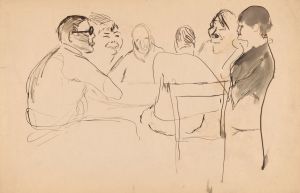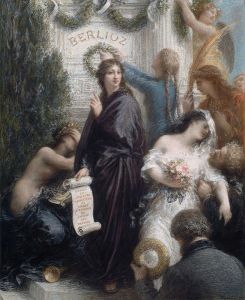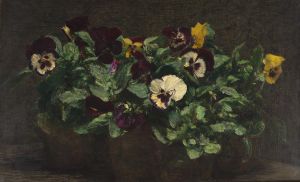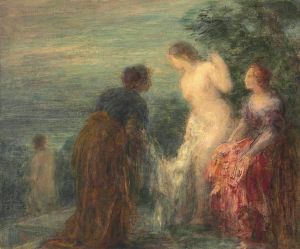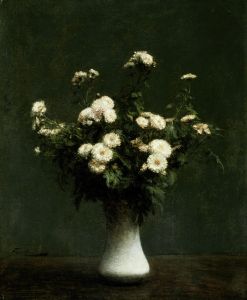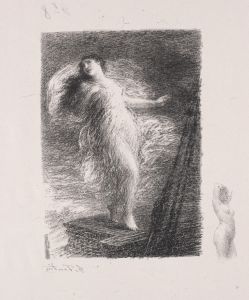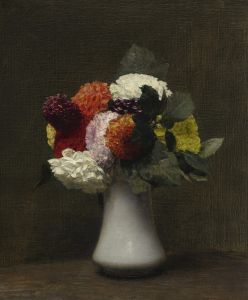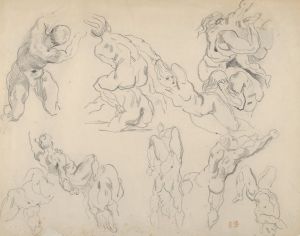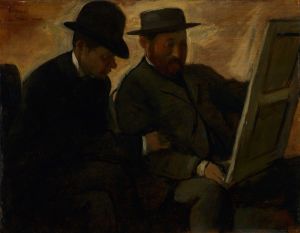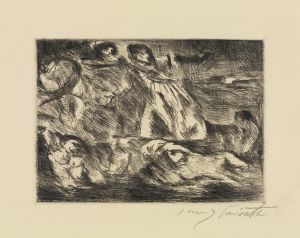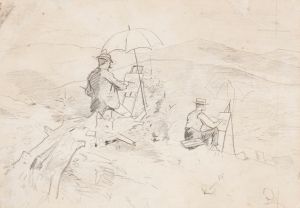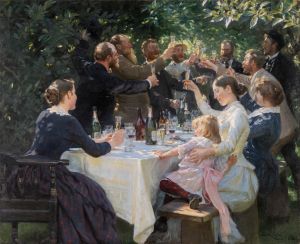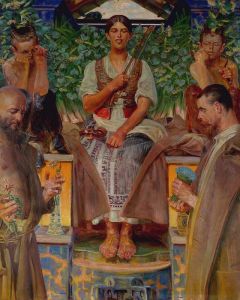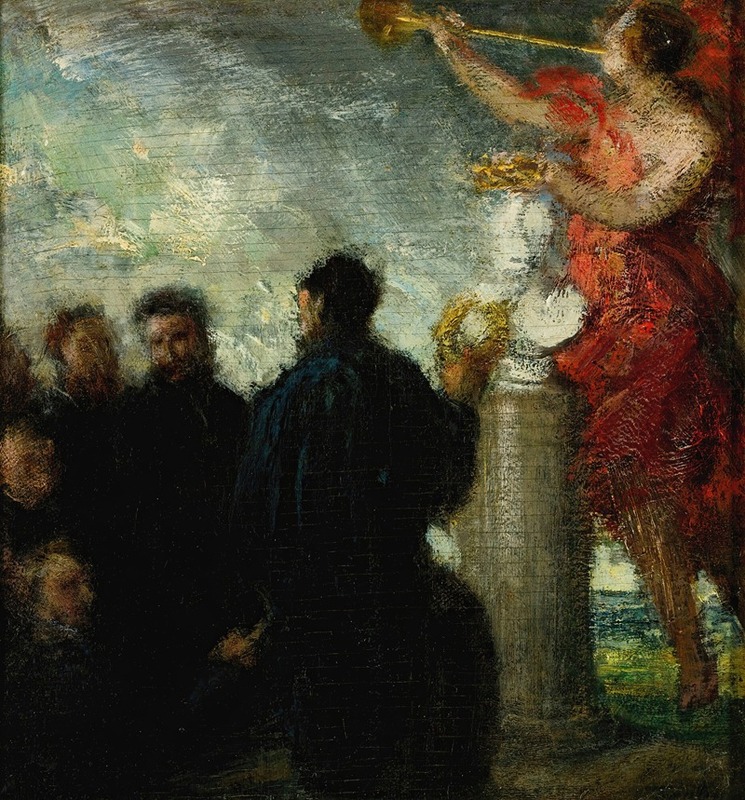
Hommage À Eugène Delacroix
A hand-painted replica of Henri Fantin-Latour’s masterpiece Hommage À Eugène Delacroix, meticulously crafted by professional artists to capture the true essence of the original. Each piece is created with museum-quality canvas and rare mineral pigments, carefully painted by experienced artists with delicate brushstrokes and rich, layered colors to perfectly recreate the texture of the original artwork. Unlike machine-printed reproductions, this hand-painted version brings the painting to life, infused with the artist’s emotions and skill in every stroke. Whether for personal collection or home decoration, it instantly elevates the artistic atmosphere of any space.
Henri Fantin-Latour's painting "Hommage à Eugène Delacroix" is a significant work in the history of 19th-century French art. Created in 1864, this group portrait serves as a tribute to the influential Romantic painter Eugène Delacroix, who had passed away the previous year. The painting is notable for its assembly of prominent artists and writers of the time, reflecting the deep respect and admiration Delacroix commanded among his contemporaries.
Fantin-Latour, known for his still lifes and portraits, was deeply influenced by Delacroix's work and the Romantic movement. "Hommage à Eugène Delacroix" is a testament to this influence, capturing the spirit of an era that valued artistic innovation and emotional expression. The painting features a gathering of notable figures, each of whom had a connection to Delacroix or his artistic ideals.
The composition of the painting is carefully arranged, with the figures positioned around a portrait of Delacroix, which serves as the focal point. This arrangement emphasizes the collective homage being paid to the late artist. Among the figures depicted are some of the most distinguished artists and writers of the period, including James McNeill Whistler, Édouard Manet, Charles Baudelaire, and Fantin-Latour himself. Each individual is rendered with attention to detail, capturing their likenesses and personalities.
James McNeill Whistler, an American artist known for his innovative approach to painting, is positioned on the left side of the canvas. His presence in the painting highlights the international influence of Delacroix's work. Édouard Manet, a pivotal figure in the transition from Realism to Impressionism, is also included, underscoring the connection between Delacroix's Romanticism and the emerging modern art movements.
Charles Baudelaire, the renowned poet and critic, is another key figure in the painting. Baudelaire was a vocal supporter of Delacroix and shared his belief in the importance of imagination and emotion in art. His inclusion in the painting signifies the intersection of visual art and literature during this period.
Fantin-Latour himself appears in the painting, a testament to his personal admiration for Delacroix. By including himself, Fantin-Latour not only pays tribute to Delacroix but also asserts his own place within the artistic community that Delacroix had influenced.
The painting is characterized by its subdued color palette and realistic depiction of the figures, a style that contrasts with the more dramatic and colorful works of Delacroix. This stylistic choice reflects Fantin-Latour's own artistic sensibilities while still honoring the legacy of Delacroix.
"Hommage à Eugène Delacroix" is housed in the Musée d'Orsay in Paris, where it continues to be appreciated by art enthusiasts and historians alike. The painting serves as a historical document, capturing a moment in time when the art world was undergoing significant changes. It stands as a testament to the enduring impact of Eugène Delacroix and the respect he commanded among his peers.
Through this work, Fantin-Latour not only commemorates Delacroix but also highlights the interconnectedness of artists and writers during a pivotal moment in art history. The painting remains an important piece for understanding the cultural and artistic milieu of 19th-century France.





